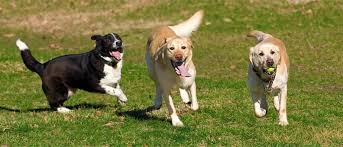Taking your furry friend to the dog park can be a blast! But it’s not just about letting your dog loose to run wild. There’s a whole etiquette to follow so that everyone—both humans and dogs—has a good time. In this guide, we’ll cover everything you need to know to be the ideal dog park-goer. Let’s dive in!
Know Your Dog’s Personality
Understanding Your Pup Before Playtime
Before heading to the dog park, you need to know how your dog will behave. Is your dog shy? Aggressive? Super social? It’s important to gauge how they interact with other dogs and humans to avoid any unnecessary chaos. Not every dog is a fan of group play, and that’s okay! Some pups prefer to keep to themselves, while others thrive in a high-energy environment.
If your dog tends to be anxious or aggressive, it might be better to skip the dog park altogether. Start with controlled environments, like playdates with one or two dogs. This way, you can slowly introduce your pup to the idea of social play in a less overwhelming setting.
Keep an Eye on Your Dog
Supervision: It’s a Must!
When you’re at the dog park, it’s tempting to let your dog run off and scroll through your phone—but resist that urge! Keeping an eye on your pup ensures that you can intervene if things get a little too rowdy. Dogs communicate through body language, and sometimes things can escalate quickly if you’re not paying attention.
By supervising closely, you can prevent your dog from getting too rough or being bullied by other dogs. And don’t forget, not all dog owners are as vigilant, so it’s important to watch out for interactions that could go south.
Mind Your Dog’s Manners
Social Grace for the Canine Crowd
Just like us, dogs have social rules! Knowing dog park etiquette means understanding how dogs should interact politely with each other. For example, it’s considered bad form for your dog to continually mount or pester another dog after clear signs that the other dog isn’t interested.
Also, if your dog tends to bark excessively, that could be overwhelming to other dogs and their owners. Keep the peace by encouraging polite play. If your dog can’t contain their excitement, it might be time to go for a quick walk outside the park to help calm them down.
Bring the Essentials
Don’t Be That Dog Parent
Heading to the dog park without the necessary gear is a rookie mistake. Pack poop bags (and use them!), a water bowl, and extra leashes just in case. You’ll also want to bring treats for positive reinforcement, but be mindful of other dogs—they might get a little too curious when they smell those delicious snacks!
Also, while it’s a park, it’s still important to clean up after your dog. No one wants to accidentally step in a mess that could’ve easily been avoided. Being a responsible pet owner means leaving the park as clean as you found it.
Be Mindful of Other Dogs and Owners
Respect Goes Both Ways
Dog parks aren’t just for dogs; they’re for people too! Respect other owners’ space and be aware of any dogs that might have specific needs or conditions. Not every dog in the park is comfortable with full-on, high-energy play. Some might have health issues, or they’re simply older and prefer a slower pace.
If you notice a dog that’s showing signs of discomfort or aggression, keep your dog away. Similarly, always ask the owner’s permission before letting your dog approach another pup. A little consideration can go a long way toward creating a positive environment for everyone involved.
Time Your Visits Wisely
When to Play and When to Stay Home
Timing is everything when it comes to the dog park. Certain times of the day—like early morning or late afternoon—can be busier than others, making the park a bit overwhelming. If your dog is new to this environment or tends to get overstimulated, it’s best to visit during quieter hours.
Additionally, weather can be a big factor. If it’s too hot, your dog might not be able to handle prolonged play without overheating. Cold weather can also limit the fun. Watch for signs of fatigue or distress and know when it’s time to call it a day.
Be Ready for Any Situation
Prepare for the Unexpected
Accidents happen, even in the most controlled environments. Whether it’s a scrape, a doggy disagreement, or an upset stomach, it’s good to be prepared. Carrying a small first-aid kit in your car can be a lifesaver if your dog gets into any minor trouble. And remember, always stay calm in tense situations. Dogs feed off their owner’s energy, so keeping cool can help diffuse any potential issues.
Sometimes, no matter how well-prepared you are, things just don’t go as planned. Whether it’s a scuffle or an unexpected reaction to another dog, being ready for the unexpected can save the day—and keep both you and your pup coming back for more playtime.
Know When to Leave
Exiting Gracefully
Sometimes, it’s just not your day. If your dog isn’t getting along with others or if you notice they’re starting to get tired or irritated, it’s okay to leave early. Forcing your dog to stay when they’re clearly not having fun can lead to unnecessary stress for both of you. Exiting on a positive note ensures that your dog will associate the park with good vibes, making them more excited for future visits.
It’s also polite to leave if your dog has been overly aggressive or disruptive. We all have off days, and knowing when to leave is a key part of dog park etiquette.












